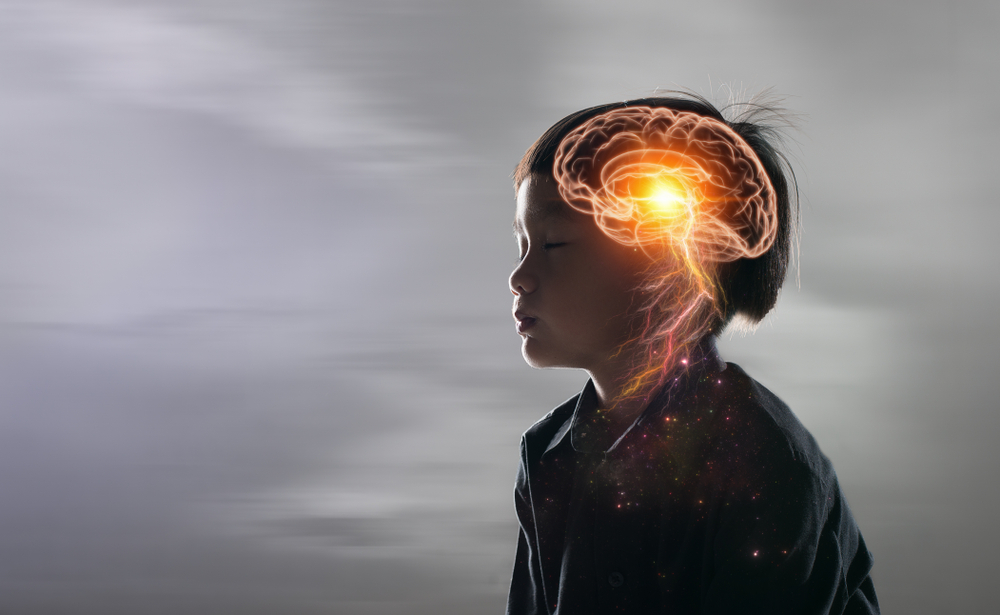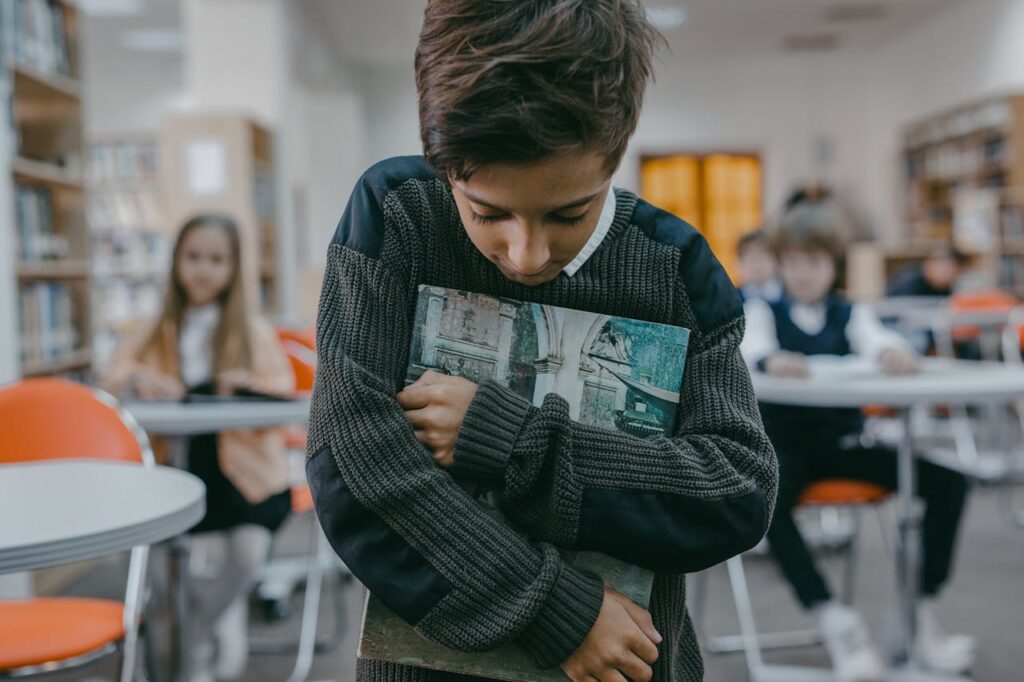Brain Scans Show Family Conflict Can Alter Children’s Brains in Ways Similar to Soldiers in Combat
Last updated on
Have you ever noticed how the human brain seems wired to spot danger before anything else? A sudden shift in tone, an angry glance, or footsteps at night can trigger our bodies to respond instantly, long before logic has time to weigh in. For children growing up in violent homes, this hyper-awareness isn’t just instinct. It becomes etched into the brain itself.
A groundbreaking study from University College London and the Anna Freud Centre found that children exposed to family violence show the very same brain activity patterns as soldiers who have endured combat. On the surface, these children appeared healthy, free of psychiatric symptoms. Yet inside, their brains revealed a silent adaptation that may protect them in the moment but bring hidden costs in the years ahead.
This discovery raises a difficult question: what happens when a child’s most formative environment teaches the brain that the world is a battlefield?

The Study at a Glance
The research team worked with forty three children, twenty of whom had documented histories of family violence and twenty three who had not. All were about twelve years old and had been screened to ensure they did not show clinical signs of anxiety or depression.
While inside an fMRI scanner, each child viewed a series of faces displaying anger, sadness, or a neutral expression. Their task was deceptively simple: identify whether each face was male or female. By making emotion incidental to the assignment, the researchers could observe how the brain responded to threat cues without instructing the children to focus on them.
The scans revealed clear differences. Children who had lived with family violence showed heightened activity in the right amygdala and in both sides of the anterior insula when they saw angry faces, but not when they saw sad ones. As the authors noted, maltreated children “show increased AI and amygdala reactivity in response to angry but not sad faces.”
The intensity of this response was not uniform. Within the violence-exposed group, those who had endured more severe experiences displayed stronger activation in the left anterior insula. The correlation was statistically significant, suggesting that the brain’s adaptation to threat may scale with the level of exposure.

How These Brain Patterns Fit Into the Wider Trauma Science
The anterior insula and amygdala sit at the heart of a salience system that helps the brain detect and prioritize potential threats. Evidence cited in the study shows that the insula integrates sensory and bodily signals to guide emotion and decision making, and that its activity can even predict how painful a stimulus will feel. The amygdala flags salient facial cues and helps marshal rapid responses. When these regions become more reactive, the brain is essentially tuning itself to notice danger sooner and more often.
This tuning is not unique to children who have lived with family violence. Research referenced in the paper documents similar functional adaptations in healthy soldiers after deployment to a combat zone. In a longitudinal design, increased reactivity in the amygdala and insula emerged with combat stress even without parallel rises in post-traumatic stress symptoms, suggesting neural recalibration can occur beneath the surface of self-reported mental health.
Other developmental studies strengthen the picture. Children who experienced early deprivation, such as institutional care, show elevated amygdala responses to emotional faces, pointing to broad effects of adverse caregiving environments on limbic development. Meta analytic work summarized by the authors links heightened amygdala and insula responses to threat across several anxiety disorders, which helps explain why early hypervigilance can become a vulnerability later in life if supports are not in place.

Taken together, these strands describe a coherent mechanism. In environments where danger is common, the brain shifts its thresholds in favor of rapid detection. That shift may be functional in unsafe settings but can create friction in ordinary classrooms, playgrounds, and homes where ambiguous social cues are misread as threatening. Recognizing this pattern is the first step toward building supports that help children recalibrate in safer contexts.
The Global Scale and Stakes
Child maltreatment is not rare or isolated. The World Health Organization estimates that six in ten children under five regularly experience physical punishment or psychological violence from caregivers. It also reports that one in five women and one in seven men were sexually abused as children. In broader terms, up to one billion children aged two to seventeen experience physical, sexual, or emotional violence or neglect in a single year. These numbers sketch the size of the challenge that health systems, schools, and families face worldwide.
Much of this harm remains hidden. WHO notes that only a fraction of child victims ever receive professional support. Even mortality is undercounted. Each year an estimated 40,150 homicide deaths occur among children under eighteen, and many deaths linked to maltreatment are misattributed to falls, burns, or drowning.

The consequences reach across a lifetime. Beyond injuries, children who experience maltreatment face higher risks of post traumatic stress, anxiety, depression, and sexually transmitted infections including HIV. Violence in childhood is associated with lower educational attainment, and children who experienced any form of violence have a 13 percent greater likelihood of not graduating from school. The economic costs accumulate in hospitalizations, mental health care, child welfare services, and long term health spending.
Risk is shaped by context, not by a child’s fault. WHO emphasizes that children are never to blame. Vulnerability can increase with very young age or adolescence, disability, persistent crying or special needs, and for those who identify as or are identified as LGBTQ. Risks also rise when caregivers struggle with substance use, untreated mental health conditions, poor impulse control, or financial stress. Relationship level factors like family breakdown and community level pressures such as poverty and weak services compound the danger. Societal norms that normalize violent discipline and rigid gender roles make matters worse.
Prevention is possible. The INSPIRE framework endorsed by WHO and partner agencies outlines seven evidence based strategies that range from enforcing laws that protect children to supporting parents, changing harmful norms, and building safe environments. The details come next, but the signal is clear. With coordinated action, communities can reduce violence and its lifelong fallout.
Why Some Children Bounce Back
Heightened threat sensitivity in the brain does not lock a child into a single future. The same plasticity that allows circuits to adapt to danger also allows them to recalibrate in safer settings. Outcomes vary widely, shaped by the severity and duration of adversity, the presence of stable caregiving, and access to timely support. The study’s authors caution that increased reactivity in threat detection circuits may operate as a latent risk factor rather than a diagnosis, which is why follow up care and protective environments matter.
Protective relationships are central. Consistent, responsive adults help reframe a child’s expectations about safety, which gradually shifts attention away from constant scanning for threat toward learning, play, and healthy social cues. Schools and community programs add another layer of buffering by creating routines, predictable rules, and trusted mentors. These conditions give the brain repeated experiences of safety that can soften hypervigilant patterns over time.
Clinical support can accelerate recovery. Trauma informed therapies for children aim to strengthen emotion regulation, build language for internal states, and practice skills for navigating conflict without fight or flight responses. Because the study links more intense neural responses to greater exposure, careful monitoring for emerging anxiety or mood symptoms is essential, especially during transitions like puberty and school changes.
Resilience does not mean the absence of effects. It means capacity for healthy functioning in spite of early stress. Recognizing how threat tuned brains can misread neutral situations helps caregivers and teachers respond with structure and calm rather than punishment. With the right mix of relationships, routines, and evidence based care, many children shift from survival mode toward growth.
What We Can Do to Protect and Support Children
The science is clear: early adversity reshapes the brain, but it does not define a child’s destiny. Everyday choices from parents, caregivers, and communities can buffer stress, strengthen resilience, and build healthier futures. Here are practical steps that anyone can take:
-
- Create safe, predictable spaces at home. Regular routines like shared meals, bedtime rituals, or weekend activities give children a sense of stability. Predictability reassures a brain that has learned to stay on high alert.
-
- Choose discipline that teaches, not punishes. Harsh punishment raises fear without improving behavior. Calm explanations, time to cool down, and collaborative problem solving model healthy conflict resolution while protecting emotional safety.
-
- Pay attention to emotional cues. Children under stress may not voice fear directly. Watch for withdrawal, overreactions, or restlessness. Meeting these signals with patience and empathy helps them feel understood and secure.
-
- Build supportive networks. Parenting is lighter with a safety net. Friends, extended family, or community groups can ease pressure, while mentors, teachers, or coaches provide children with consistent examples of stability and care.
-
- Encourage healthy coping skills. Outlets like journaling, art, mindfulness, or sports allow children to process strong emotions constructively. These activities reinforce self-regulation, balancing brains wired for hypervigilance.
-
- Know where help is available. Whether through a local counselor, helpline, school program, or parenting workshop, resources exist. Knowing them ahead of time makes it easier to reach out early, before stress escalates into harm.
When Home Feels Like a Battlefield
The scans show a simple truth. When home is unpredictable, a child’s brain learns to prioritize threat. That tuning can help in the moment, yet it can also follow a child into classrooms, friendships, and future relationships. Recognizing this pattern is not about labeling children. It is about seeing what their brains have been practicing and offering safer patterns to practice instead.
The scale of the problem is large, but so is our capacity to change it. Parents who choose teaching over punishment, schools that build predictable routines, neighbors who check in, and communities that make help easy to find can shift a child’s daily experience toward safety. Brains are plastic. With steady care and timely support, vigilance can give way to curiosity and learning.
For readers, the takeaway is practical. Notice the small choices that lower the temperature at home. Learn what resources exist nearby before stress peaks. Support policies that protect children and strengthen families. When we pair clear science with everyday action, we do more than respond to harm. We prevent it, and we give children room to grow.
Some of the links I post on this site are affiliate links. If you go through them to make a purchase, I will earn a small commission (at no additional cost to you). However, note that I’m recommending these products because of their quality and that I have good experience using them, not because of the commission to be made.

































 JOIN OVER
JOIN OVER
Comments